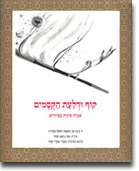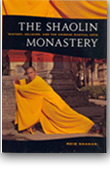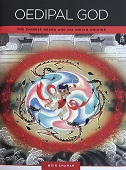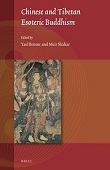|
Home » List of Publications |
||||||
 |
 |
 |
 |
 |
 |
 |
Books (Monographs)
|
|
Crazy Ji: Chinese Religion and Popular Literature. Harvard-Yenching Institute Monograph Series, 48. Cambridge: Harvard University Asia Center, 1998.
The Shaolin Monastery: History, Religion and the Chinese Martial Arts. Honolulu: University of Hawai’i Press, 2008.
Chinese translation: Shaolin si: Lishi, zongjiao, yu wushu. Translated by Zhao Dianhong. Beijing: Zongjiao wenhua chubanshe, 2016.
Portuguese translation: O Mosteiro de Shaolin: História, Religião e as Artes Marciais Chinesas. Translated by Rodrigo Wolff Apolloni and Rodrigo Borges de Faveri. São Paulo: Editora Perspectiva, 2011.
Polish translation: Klasztor Shaolin: Historia, religia i chińskie sztuki walki. Translated by Justyn Hunia. Kraków: Wydawnictwo Uniwersytetu Jagiellońskiego, 2011.
Italian translation: Il Monastero di Shaolin: Storia, religione e arti marziali cinesi. Translated by B. Mottura. Roma: Astrolabio Ubaldini, 2011.
Hebrew translation: Minzar Shaolin: Historia, Dat, ve-Umanuiot-ha-Lechima ha-Siniot. Trans. Doron Magen. The Israel Historical Society and the Magnes Press, forthcoming.
Oedipal God: the Chinese Nezha and his Indian Origins. University of Hawai'i Press, 2015.
Hebrew-Language Books
|
|
The Chinese Religion (הדת הסינית) (in Hebrew). Tel Aviv: The Broadcast University Series Press, 1998.
Monkey and the Magic Gourd (קוף ודלעת הקסמים) (in Hebrew). By Wu Cheng'en. Translated and Adapted by Meir Shahar. Drawings by Noga Zhang Shahar (נגה ג'אנג שחר). Tel Aviv: Am Oved, 2008.
Edited Volumes
|
|
Unruly Gods: Divinity and Society in China. Coedited with Robert Weller. Honolulu: University of Hawai’i Press, 1996.
India in the Chinese Imagination: Myth, Religion, and Thought. Coedited with John Kieschnick. Philadelphia: University of Pennsylvania Press, 2013.
Chinese and Tibetan Esoteric Buddhism. Coedited with Yael Bentor. Leiden: Brill, 2017.
Animals and Human Society in Asia: Historical, Cultural and Ethical Perspectives. Coedited with Rotem Kowner, Guy Bar-oz, Michal Biran, and Gideon Shelach-Lavi. Palgrave Macmillan, 2019.

Selected Essays
|
|
“The Lingyin si Monkey Disciples and the Origins of Sun Wukong.” Harvard Journal of Asiatic Studies 52.1 (June 1992): 193-224.
“Vernacular Fiction and the transmission of the Chinese Pantheon.” In Meir Shahar and Robert Weller, eds., Unruly Gods: Divinity and Society in China. Honolulu: Hawaii University Press, 1996.
“Epigraphy, Buddhist Historiography, and Fighting Monks: The Case of the Shaolin Monastery,” Asia Major 13.2 (2000): 15-36.
“Ming-Period Evidence of Shaolin Martial Practice.” Harvard Journal of Asiatic Studies 61.2 (December 2001):359-413.
“Diamond Body: The Origins of Invulnerability in the Chinese Martial Arts.” In Perfect Bodies: Sports Medicine and Immortality. Edited by Vivienne Lo. London: British Museum, 2012.
"Religion in the Story of the Stone." In Approaches to Teaching The Story of the Stone (Dream of the Red Chamber). Edited by Andrew Schonebaum and Tina Lu. New York: Modern Language association of America, 2012.
“Indian Mythology and the Chinese Imagination: Nezha, Nalakūbara, and Kṛṣṇa.” In John Kieschnick and Meir Shahar, editors, India in the Chinese Imagination: Myth, Religion, and Thought. Philadelphia: University of Pennsylvania Press, 2013.
“Chinese Religions and Violence.” In the Oxford Handbook of Religion and Violence. Edited by Michael Jerryson, Mark Juergensmeyer, and Margo Kitts. Oxford: Oxford University Press, 2013.
“Mythologie indienne, imaginaire chinois: Nezha, Nalakūbara et Kṛṣṇa.” In Empreintes du tantrisme en Chine et en Asie orientale: Imaginaires, rituels, influences. Edited by Vincent Durand-Dastès. Mélanges chinois et bouddhiques xxxii. Leuven: Peeters, 2016.
“The Legacy of the Tantric Angles.” In pp. 31-69 of Xinyang, Shijian yu wenhua tiaoshi 信仰實踐與文化調適 (Belief, practice, and cultural adaptation: Papers from the religion section of the fourth international conference on sinology). Edited by Kang Bao 康豹 (Paul R. Katz) and Liu Shu-fen 劉淑芬. Taibei: Zhongyang yanjiuyuan, 2013.
“The Tantric Origins of the Horse King: Hayagrīva and the Chinese Horse Cult.” In Chinese and Tibetan Esoteric Buddhism. Edited by Meir Shahar and Yael Bentor. Leiden: Brill, 2017.
“The Donkey in Late-Imperial and Modern North China.” Asia Major 32.2 (2017): 71-100.
“Newly-Discovered Manuscripts of a Northern-Chinese Horse-King Temple
Association,” T'oung Pao vol. 105, no. 1 (2019): 183-228.
“The Chinese Cult of the Horse King,” in Animals and Human Society in Asia: Historical and Ethical Perspectives. Edited by Rotem Kowner, Guy Bar-oz, Michal Biran, Meir Shahar, and Gideon Shelach-Lavi. London: Palgrave Macmillan, 2019.
|
|
Top of page